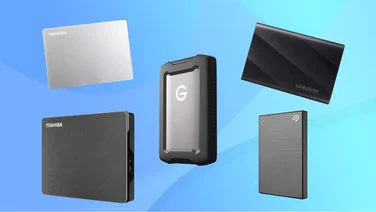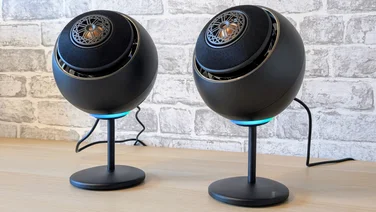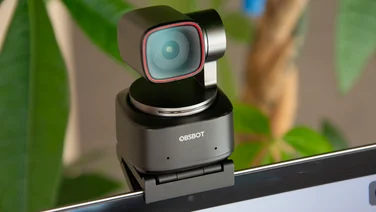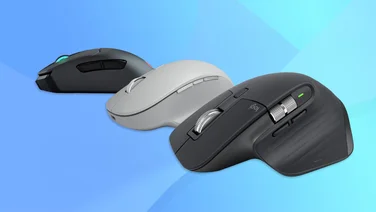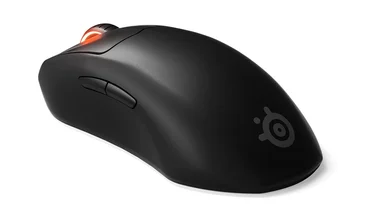To help us provide you with free impartial advice, we may earn a commission if you buy through links on our site. Learn more







- Solid metal build
- Superb image quality
- Auto framing works well
- No microphone
- Can’t tweak horizontal position
- Privacy shutter isn’t integrated
4K webcams such as the Dell UltraSharp aren’t all that common, and there’s a very good reason. For most people, a good 1080p webcam is perfectly good enough; although it sounds attractive on paper, the vast majority simply don’t need 4K. Our best webcam roundup features a selection of both 4K and 1080p.
Nevertheless, the extra pixels do give you more flexibility to crop more closely into an image without losing quality and, if you harbour ambitions to become a YouTube celebrity, the more pixels you have at your disposal, the better.
Dell UltraSharp Webcam review: What do you get for the money?
The other reason you might want to pause before investing in a 4K webcam like the UltraSharp is the price, because cameras like these tend to be much more expensive than their 1080p counterparts.
The UltraSharp will set you back £180, and its main rival – the Logitech Brio 4K – is similarly expensive. The best 1080p webcams we’ve tested, on the other hand – the Anker PowerConf C300, the AVerMedia PW315 and the Poly Studio P5 – tend to cost £110 or less.
For the money, the Dell UltraSharp does come with a few more extras, however. Aside from being incredibly solidly made – the barrel is constructed from metal and both the lens and its protective element are made from glass – it also comes supplied with a monitor mount and a separate tripod adapter.
Each of these is also made of metal and docks neatly into a rectangular, magnetic cavity on the webcam’s underside, making it easy to swap between the two. The webcam also comes with a 2m cable. This isn’t captive but, since the port on the camera is inset, it might as well be – take note, because if you lose the cable you’ll have difficulty finding another that fits.







Among the webcam’s other key features is support for Windows Hello facial recognition login, allowing you to sit down at your computer in the morning and log in without even having to touch the keyboard. This works quickly and reliably.
There is one major feature missing, however: the Dell UltraSharp has no built-in microphone. Now, we’d always recommend you use a dedicated USB microphone or a headset for your calls, but it’s always nice to have a built-in microphone for use in emergency situations.
READ NEXT: The best PC to buy
Dell UltraSharp Webcam review: What’s the image quality like?
With a Sony Starvis CMOS sensor sitting behind the UltraSharp’s autofocus lens, picture quality is, as you might expect, excellent. Video is captured at 3,840 x 2,160 at up to 30fps with a default field of view of 90 degrees, and the image looks crisp and detailed. It’s good in low-light conditions, too, and although some visible noise creeps in when the lights are dimmed it’s not particularly distracting, even while cropped in.
The default colour balance isn’t great, though, lending skin tones an overly pink hue, but fortunately the accompanying Dell Peripheral Manager application gives you the option to tweak things. There’s a selection of presets to choose from (Default, Smooth, Vibrant or Warm), plus the ability to adjust brightness, sharpness, contrast and saturation. Handily, once you’ve arrived at your ideal setup – I found all the default presets to be oversaturated – you can save your preferences as a preset.







That’s not all, though. Via the accompanying app, you can also apply HDR to the image, which balances out areas of light and dark nicely, and adjust the field of view. For the latter, you can select between 65, 78 and 90 degrees, adjust the zoom by hand using a slider, or choose “AI Auto Framing”, which detects your face and keeps it centred automatically.
In testing, the tracking worked well, following my face smoothly and reliably. There’s a small delay of around a second before the frame moves, but no sign of distracting hunting back and forth as I saw occasionally with the Anker PowerConf C300.
Dell UltraSharp Webcam review: What could it do better?
Obviously, I’d like to see an integrated microphone (how much would it have cost Dell just to stick one in?), but there are a couple of other irritations.
The first is that the monitor clip doesn’t offer much in the way of positional flexibility. You can tweak the vertical angle by tilting the webcam back and forth but there’s no horizontal tilt or swivel adjustment, which seems bizarre on a webcam this pricey.
The second is the privacy cover, which instead of being integrated into the unit itself is a separate, magnetically attachable disc. Let’s face it, you’re going to put this down at some point and forget where you had it last, at which point your webcam loses its privacy shutter. Not great.
READ NEXT: Stay comfortable with the best office chair
Dell UltraSharp Webcam review: Should you buy it?
The Dell UltraSharp delivers high levels of image quality for a webcam and it’s one of the few that also supports Windows Hello facial recognition. Aside from the lack of a built-in microphone (why, Dell, why?), it’s one of the best webcams you can buy.
The big question is, do you really need a 4K webcam? The short answer, for most people, is no. A 4K webcam is overkill for video calls – in fact, most services don’t support 4K at the current time – and a decent 1080p camera like the Anker PowerConf C300 or the Poly Studio P5 will serve you perfectly well.
The only reason you might want to splash out is if you like the idea of being able to digitally zoom in to keep the frame clear of messy clutter; otherwise, just stick with 1080p.

